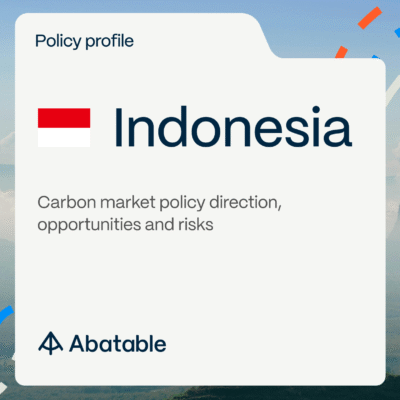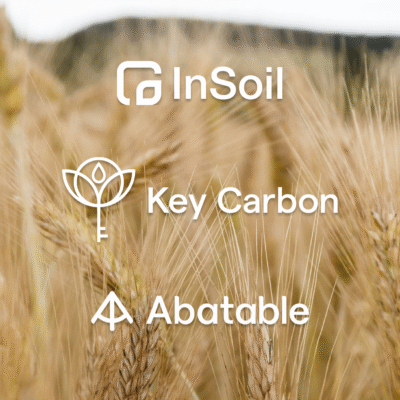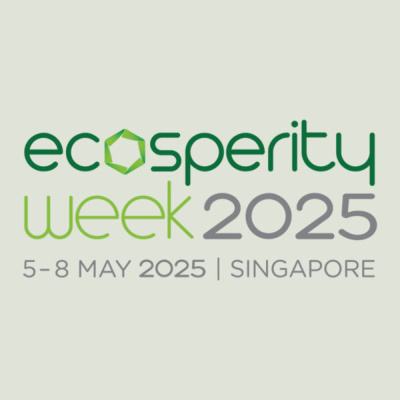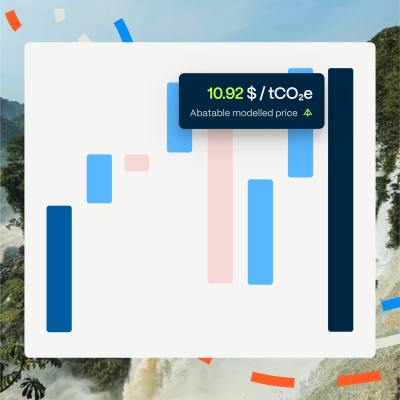Contents
- About the Index
- Methodology
- Indicators used in the Index
- Indicator selection criteria
- Disclaimers
About the Index
In September 2023, Abatable launched the first edition of the VCM Investment Attractiveness Index, designed to provide investors with insights on countries’ carbon market risks and opportunities, allow carbon credit buyers to get more information about the carbon credits they are purchasing, and aid governments in developing policies to facilitate the growth of the VCM.
This year, Abatable is launching the second edition of the Index. In line with our objective of tracking and ranking countries on their appeal to VCM investors and project developers, all 24 indicators of the index have been reviewed and updated to the latest data points available as of July 2024, aiming to provide the most recent and accurate picture of countries’ latest developments in the market.
Methodology
Abatable’s VCM Investment Attractiveness Index ranks the assessment of the factors driving host country attractiveness when it comes to developing carbon projects for the VCM. Aiming to ease the comparison of results over time, this year’s methodology follows the same factors considered in the previous edition; however, there are a number of elements that have been updated to better reflect countries’ performance on specific areas – see ‘Methodology updates for the 2024 edition’.
In line with last year’s methodology, the 2024 edition of the Index is divided into three pillars:
- Global carbon market readiness, analysing the jurisdiction’s experience in hosting VCM projects and its readiness to manage its engagement with Article 6 of the Paris Agreement.
- Investment landscape, providing insights into the national political and economic context as a measure of the risks for foreign investors.
- Climate, nature and people opportunity, quantifying the potential impact of the role the VCM can play in closing the financing gap to reduce emissions, conserve critical ecosystems and improve livelihoods.
Each pillar comprises a set of carefully selected quantitative indicators that meet our selection criteria (see section below). We ranked every country using publicly available data for each indicator which was then converted into a normalised score (from one to 100), which we then weighted to generate the pillar score. Each pillar is then also weighted to derive the overall score and ranking in the Index.
For this year’s edition we also calculated an attribution score, which reflects the contribution degree of each indicator relative to the final score, making it easier for users to understand the relevance of different indicators across countries.
The weightings of the indicators and pillars in the 2024 edition are the same as those in the 2023 edition, and can be found by hovering over a cell in the tool. Correspondingly, the Global carbon market readiness pillar has the strongest overall bearing on rank position, followed by Climate, nature and people opportunity and finally Investment landscape.
The indicators selected capture either historical data or momentum trends. Historical indicators measure a country’s past experience and are relatively static by nature. These indicators include, for example, experience with the Clean Development Mechanism (CDM), measured by the number of certified emissions reduction credits issued, or the CO2 reduction opportunity, measured by tonnes of CO2 emitted in 2020.
Momentum metrics reflect developments happening today and provide a sense of directionality for the future. For example, a country’s engagement with Article 6 or the opportunity to reduce deforestation are more dynamic factors that have the potential to change and influence investment conditions quickly.
The weights of each indicator were fine-tuned by Abatable based on extensive stakeholder engagement and feedback from policymakers, VCM experts, project developers and investors.
Methodology updates for the 2024 edition
As part of Abatable’s growth, we are constantly expanding the scope of our data sources to help our stakeholders better understand carbon markets. Accordingly, the 2024 VCM Investment Attractiveness Index includes a data refresh of existing data sources and the incorporation of new sources.
In particular, this year we incorporated two new registries to our pool of data sources: Cercarbono and COLCX which were set up in response to Colombia’s carbon credit-linked carbon tax. Furthermore, we adjusted the methodology of two indicators. Our changes are summarised in Table 1.
The relative weights of the indicators and pillars remain the same, as well as the calculation of scores for the rest of the indicators.
Indicators used in the Index
Pillar one: Global carbon market readiness
This pillar assesses the country’s readiness to take advantage of new carbon market opportunities presented by the UN Framework Convention on Climate Change (UNFCCC). It comprises eight indicators reflecting countries’ experience in hosting VCM projects, the breadth of their developer ecosystems and their experience and interest in engaging with the UNFCCC.
The pillar is weighted heavily towards indicators representing current market momentum and future potential. The country’s engagement with the Paris Agreement’s Article 6 and the strength of its project developer ecosystem, particularly around carbon removals, has a strong bearing on the score. The aim is to uplift future-focused countries while also recognising the track record of countries with a strong VCM and CDM background.
Indicators
- Legacy VCM issuances
Measured by: The number of carbon credits issued in the country from January 2005 to July 2024.
Data sources: Verra, Gold Standard, Climate Action Reserve, American Carbon Registry, Cercarbono, COLCX, Architecture for REDD+ Transactions
Unit: Number of credits issued (tCO2e) - Legacy developer ecosystem
Measured by: The number of project developers that issued carbon credits in the country from January 2005 to July 2024.
Data sources: Verra, Gold Standard, Climate Action Reserve, American Carbon Registry, Cercarbono, COLCX, Architecture for REDD+ Transactions
Unit: Number of project developers - Developer ecosystem today
Measured by: The number of VCM developers that issued credits in the country in the 24 months from July 2022 to July 2024.
Data sources: Verra, Gold Standard, Climate Action Reserve, American Carbon Registry, Cercarbono, COLCX, Architecture for REDD+ Transactions
Unit: Number of project developers
- Recent supply of in-demand credits
Measured by: The country’s supply of projects that are currently in demand by the market, based on Abatable’s client conversations. The indicator uses weightings applied to different project types based on their level of demand – for example removals projects score highly as there is currently a strong buyer preference for these, while renewable energy projects score lowly. The weightings used in the current edition are the same used in the 2023 edition. The overall indicator score is then calculated by combining these weightings against the number of issued credits from August 2022 to August 2024.
Data sources: Verra, Gold Standard, Climate Action Reserve, American Carbon Registry, Cercarbono, COLCX, Architecture for REDD+ Transactions
Unit: Number of credits issued (tCO2e) - CDM experience
Measured by: The total number of certified emission reduction credits issued in the country under the Clean Development Mechanism from January 2007 to July 2024.
Data source: CDM registry
Unit: Number of credits issued (tCO2e) - REDD+ readiness
Measured by: A mix of variables which include the engagement by the country with the Forest Carbon Partnership Facility from 2010 to 2024, including the ‘Readiness Fund’ and ‘Carbon Fund’; the existence of a REDD+ National Strategy; Green Climate Fund engagement in result-based payments; and REDD+ credits issued through the VCM.
Data sources: Forest Carbon Partnership Facility, Green Climate Fund, REDD+ Web Platform, Verra, Gold Standard, Climate Action Reserve, American Carbon Registry, Cercarbono, COLCX, Architecture for REDD+ Transactions
Unit: In-house calculated score
- Forest baseline proficiency
Measured by: The number of forest reference emissions levels (FRELs) submitted by the country.
Data source: UNFCCC, REDD+ Web Platform
Unit: Number of FRELs
- Article 6 engagement
Measured by: The country’s degree of readiness to engage with Article 6 of the Paris Agreement. The indicator uses weightings applied to different variables, based on Abatable’s client conversations. For example, a host country having an Article 6 Regulatory Framework scores higher than a host country having a designated national authority overseeing Article 6. The overall indicator score is then calculated by combining these weightings against the score of the other variables within this indicator – see Table 1 above.
Data sources: UNFCCC (a), UNFCCC (b), IETA, UNEP
Unit: In-house calculated score
Pillar two: Investment landscape
This pillar focuses on the broader political and macroeconomic conditions in the country. It comprises eight indicators assessing countries’ political stability, economic risk, financial stability and the broader appetite for investment from the financial community.
Historical indicators such as political stability and tenure security have a large influence on the overall score, with these two alone accounting for +50% of the pillar’s weighting.
Indicators
- Political stability
Measured by: The country’s 2022 political stability score in the World Bank’s Worldwide Governance Indicators.
Data source: World Bank
Unit: World Bank calculated score - Recent coups d’Etat
Measured by: The number of coup events in the country, including realised coups, attempted coups, and coup conspiracies, from 2022 to the end of 2023. This indicator covers the gap between the latest World Bank political stability update to today.
Data source: Cline Center Coup d’État Project Dataset
Unit: Number of coups - Tenure security
Measured by: The country’s perceived tenure security based on the percentage of people who believe it is unlikely or very unlikely they could lose the right to use their property or part of it against their will in the next five years. The data was last updated in 2020.
Data source: Prindex
Unit: % of population - Government expropriation risk
Measured by: The country’s expropriation risk score (the risk that a government forcibly takes over the ownership of privately owned property without proper compensation) in Credendo’s June 2024 country risk assessment.
Data source: Credendo
Unit: Credendo’s calculated score
- Inflation
Measured by: The country’s inflation rate (GDP deflator) in 2023 as measured by the World Bank.
Data source: World Bank
Unit: GDP deflator (annual %)
- Foreign direct investment
Measured by: The amount of foreign direct investment in the country in US dollars per capita in 2021 (data for 2022 is limited for a large number of countries).
Data source: World Bank
Unit: Net inflows (Balance of payments, current US$)
- Financial sanctions
Measured by: Whether or not the country features in the UK, EU or US country sanctions list as of July 2024.
Data sources: HM Treasury, EU Commission, OFAC
Unit: Binary score, where 1 represents if any given country has financial sanctions in the corresponding countries, and 0 representing the opposite
- Rule of law
Measured by: The country’s score in the World Justice Project’s Rule of Law Index, as of July 2024. The Index evaluates 142 countries and jurisdictions around the world.
Data source: World Justice Project
Unit: World Justice Project calculated score
Pillar three: Climate, nature and people opportunity
This momentum-heavy pillar measures the potential for the VCM to reduce emissions, protect biodiversity and improve social conditions in the country.
It comprises eight relatively evenly weighted environmental and social indicators covering access to electricity, renewables penetration, clean cooking proliferation, deforestation rates, number of endangered species and CO2 emissions.
It is important to note that higher scores are applied where there is a greater opportunity for the VCM to make an impact. For example, countries with higher deforestation rates or a lower distribution of clean cooking technologies will score more highly, as there is room for a greater amount of investment to improve conditions.
Indicators
- Clean cooking opportunity
Measured by: The percentage of the country’s rural population without access to clean cooking technologies in 2022, multiplied by the number of people living rurally. This indicator highlights the opportunity available for the VCM to aid access to clean cooking.
Data source: World Bank
Unit: Number of people
- Electricity access opportunity
Measured by: The percentage of the country’s population without access to electricity in 2022, multiplied by the national population. This indicator highlights the opportunity available for the VCM to aid access to electricity.
Data source: World Bank
Unit: Number of people - Renewables adoption opportunity
Measured by: The renewable energy consumption of the country as a percentage of total final energy consumption in 2021 (data for 2022 is limited for a large number of countries). Reverse scoring is applied so countries with lower consumption have higher scores, highlighting the opportunity available for the VCM to aid growth.
Data source: World Bank
Unit: Number of people - Total biomass
Measured by: The amount of CO2 stored in living biomass above and below ground in the country in 2021 (latest data available as of July 2024), representing the opportunity for conservation.
Data source: UN Food and Agriculture Organization
Unit: Million tCO2 - Opportunity to reduce deforestation
Measured by: The change in the rate of deforestation from 2015 to 2020 (latest data available as of June 2024). Countries with higher rates of deforestation score more positively, highlighting the opportunity available for the VCM to protect forests.
Data source: UN Food and Agriculture Organization
Unit: Change in rates of deforestation, expressed in 1,000 hectares of forest area - Biomass concentration in forests
Measured by: The hectares of above-ground biomass in the country in 2020 (latest data available as of June 2024), highlighting the opportunity to conserve these ecosystems.
Data source: UN Food and Agriculture Organization
Unit: Tonnes of above-ground biomass in forest per hectare - Biodiversity conservation potential
Measured by: The number of threatened species in the country in 2022, including flora, fauna, fungi and chromists. Countries with a higher number of threatened species score more positively, highlighting the opportunity available for the VCM to aid biodiversity protection.
Data source: International Union for the Conservation of Nature Red List
Unit: Number of threatened species - CO2 reduction opportunity
Measured by: The country’s CO2 emissions in 2020 (latest data point available as of July 2024), excluding short-cycle biomass burning (e.g., agricultural waste burning and savanna burning) but including other biomass burning (such as forest fires, post-burn decay, peat fires and decay of drained peatlands), all anthropogenic CH4 sources, N2O sources and F-gases (i.e., HFCs, PFCs and SF6). Countries with higher emissions score more positively, highlighting the opportunity available for the VCM to contribute to emissions reduction.
Data source: World Bank
Unit: ktCO2 emissions
Indicator selection criteria
Indicators were selected by Abatable, in consultation with VCM experts, for their political, financial and environmental relevance, and for the quality of data available. We considered:
- Country coverage: We strive to ensure that each indicator possesses a strong coverage of data (more than 75% coverage across all countries).
- Comparability: Data to calculate indicator scores are derived from as unique and comprehensive sources as possible, focusing on a single source per indicator as far as practical, to ensure comparability between countries.
- Relevance: Indicators are chosen or developed to provide insight into country situations in the context of the Index and VCM attractiveness.
- Distinctiveness: Each indicator focuses on a different aspect and avoids overlaps or redundancies with other indicators.
- Contextual sensitivity: Indicators capture different country situations (e.g. wealth, size) and, where appropriate, indicators are normalised by GDP (PPP), GDP (PPP) per capita, population, or other relevant metrics.
- Robustness: Indicator scores are calculated from data made available by reputable sources, using the most current information available at sufficient coverage.
- Reproducibility: Indicators used for the Index are based on publicly available data.
Disclaimers
The Index methodology is unable to capture certain dynamic policy changes such as moratoriums on the international sale of carbon credits or high taxation on revenues. This is due to the fact these relatively recent and disruptive events fall outside of the standardised methodological framework developed in terms of their comparability and the availability of data.
Abatable can provide further insights into such developments through its carbon market national policy and political risk assessment products. Contact us to find out more: [email protected]; or at [email protected]
The Index does not take into account countries’ engineered carbon dioxide removal (CDR) potential, including carbon capture, usage and storage (CCUS), as the data available for CDR does not yet satisfy Abatable’s indicator inclusion criteria requirements. We will aim to include an engineered CDR indicator in future editions of the Index.
This Index has been prepared for general informational purposes only and is not intended to be relied upon as financial, accounting, tax, legal or other professional advice. Please refer to your advisors for specific advice.
About Abatable
Abatable is on a mission to enable all organisations to build a thriving future for climate, nature and people. We do this by developing the tools organisations need to confidently navigate carbon markets and find the right partners, understand market risk and amplify their planetary impact. Our solutions are enabled by technology, and powered by people, making us a trusted guide for organisations looking to take action within the complex and evolving carbon markets. Find out more at abatable.com


































































































